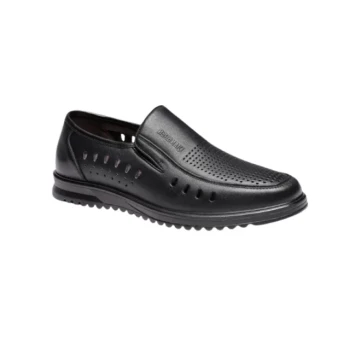The most effective way to balance snake protection with comfort is to adopt a layered system, combining snake-proof gear with situational awareness. This involves choosing either dedicated snake boots or, more commonly, pairing your preferred hiking boots with high-quality snake gaiters. This approach allows you to adapt your protection level to the terrain and perceived risk without sacrificing the fit and support of your trusted footwear.
The core challenge isn't choosing between safety and comfort, but rather integrating smart, adaptable protection into your existing hiking system. True balance comes from combining the right gear with the right mindset, ensuring you are protected without being unnecessarily burdened.
Deconstructing Your Protection System
The solution isn't a single piece of gear but a combination of equipment and behavior. We need to look at footwear, legwear, and awareness as three distinct components that work together.
Footwear: The Foundation of Comfort and Safety
Your boots are the most critical piece of gear for any long hike. Sacrificing their fit for built-in snake protection can lead to blisters and fatigue, which are far more common threats than snakebites.
Most snakebites occur on the feet and ankles. A sturdy, over-the-ankle hiking boot made of thick leather or dense synthetic materials provides a solid first layer of defense against many snake strikes.
Gaiters: The Flexible Shield
For most hikers, snake gaiters are the ideal solution. These separate protective coverings wrap around your lower leg, from the top of your boot to just below your knee.
Gaiters allow you to wear your own perfectly broken-in hiking boots, preserving the comfort and support you rely on for long distances. They are also removable, meaning you can pack them away when hiking in low-risk areas like open meadows or high-altitude trails.
Fabric and Fit: The Role of Clothing
While not a primary defense, your choice of pants matters. Loose-fitting, durable hiking pants made from tightly woven fabric can offer a surprising amount of protection.
A snake's fangs may get caught in the loose material or fail to penetrate the dense weave, which can be just enough to prevent venom injection. They also add a crucial layer of protection above the gaiter line.
Understanding the Trade-offs
Choosing your protection system involves balancing weight, breathability, and absolute security. There is no single perfect answer for every hiker or every trail.
Snake Boots vs. Gaiters: The Central Decision
Dedicated snake boots offer seamless, one-piece protection. However, they are often heavier, stiffer, and less breathable than standard hiking boots, which can be a significant drawback on a multi-mile trek.
Snake gaiters paired with hiking boots offer superior versatility and comfort. The primary trade-off is the minor inconvenience of putting them on and taking them off, as well as the potential for a small gap in coverage if not worn correctly.
The Cost of Over-Protection
Wearing heavy, non-breathable gear in hot conditions can lead to overheating and excessive sweating. This not only causes discomfort and chafing but can also accelerate dehydration and fatigue.
It's critical to match your level of protection to the actual risk. A desert trail in mid-summer requires a different approach than a cool mountain path in the spring.
Making the Right Choice for Your Hike
Your decision should be based on your personal comfort needs and the specific environment you'll be entering.
- If your primary focus is maximum versatility and comfort: Pair your trusted, well-fitting hiking boots with a quality set of removable snake gaiters.
- If your primary focus is absolute, seamless protection in high-risk areas: A dedicated, well-fitted pair of snake boots may be the best choice, provided you've tested them for comfort on shorter walks.
- If you are hiking in areas with lower snake risk: Rely on sturdy leather or synthetic hiking boots, long pants, and heightened situational awareness.
Ultimately, the best protection is avoiding an encounter altogether, so always remain vigilant on the trail.
Summary Table:
| Protection Component | Key Consideration | Best For |
|---|---|---|
| Footwear (Boots) | Foundation of comfort; thick leather/synthetic for basic ankle defense. | All hikes; primary comfort layer. |
| Gaiters | Removable shield for lower leg; pairs with your trusted boots. | Versatility; adapting protection to trail risk. |
| Snake Boots | One-piece, seamless protection; often heavier and less breathable. | High-risk areas where absolute protection is priority. |
| Clothing (Pants) | Loose, durable, tightly-woven fabric adds secondary defense. | Extra layer above the gaiters; general trail protection. |
Need Durable, Protective Footwear for Your Outdoor Customers?
As a large-scale manufacturer, 3515 produces a comprehensive range of hiking boots, snake boots, and safety footwear for distributors, brand owners, and bulk clients. Our production capabilities ensure high-quality, comfortable, and protective footwear designed for demanding conditions.
Let us help you equip your customers with the right gear for safety and comfort on the trail. Contact our team today to discuss your manufacturing needs.
Related Products
- Premium Flame-Retardant Waterproof Safety Boots and Shoes
- Premium Safety Shoes with Rotating Buckle Safety Sneakers
- Premium Wholesale Wheat Nubuck Safety Boot with Rapid Lacing System
- Wholesale Waterproof Tactical Boots Custom Suede & High-Traction Soles
- Custom Wholesale Leather Safety Boots Direct Factory Manufacturing
People Also Ask
- What additional protection levels were introduced beyond the standard S1-S3 ratings? S4 to S7 Explained
- How do some boots combine materials for better performance? Achieve Superior Safety & Comfort
- What are the benefits of proper safety footwear beyond physical protection? Boost Productivity & Morale
- What potential foot injury hazards exist in workplaces? A Guide to Mitigating Common Risks
- What features make oilfield safety shoes resistant to heat and flames? Protect Against Extreme Temperatures



















